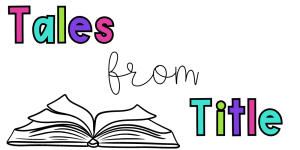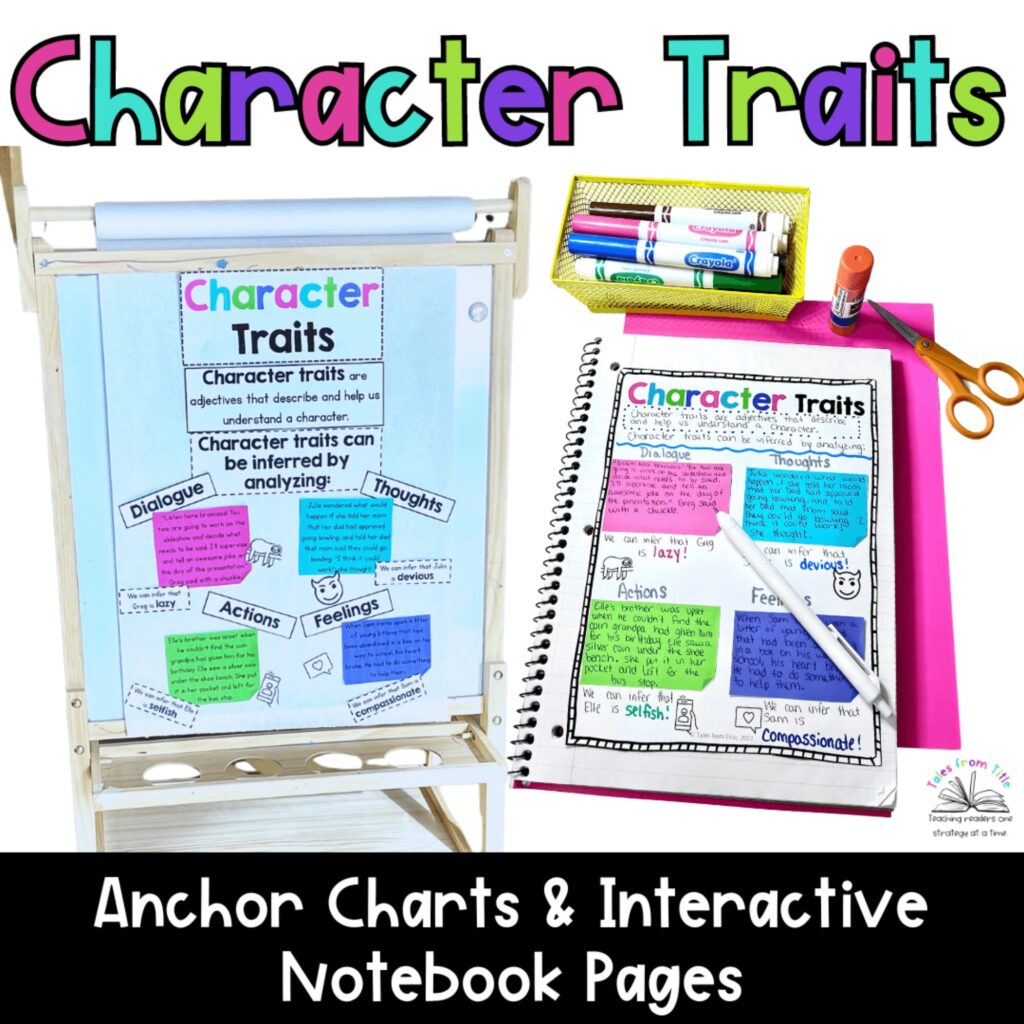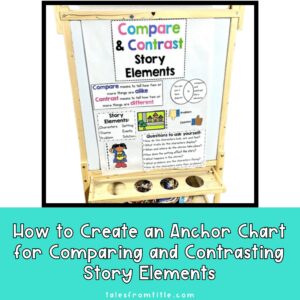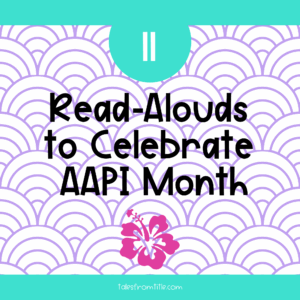Understanding character traits is an essential skill for readers. It helps them develop deeper understanding of a text by analyzing a character’s thoughts, feelings, actions, and dialogue. However, teaching this concept effectively requires engaging, visual, and interactive methods. Two powerful tools for achieving this are anchor charts and interactive notebook pages. If you’re looking for a structured way to introduce or review character traits in your classroom, using an anchor chart and/or an interactive notebook page can provide a balanced approach that enhances student learning.
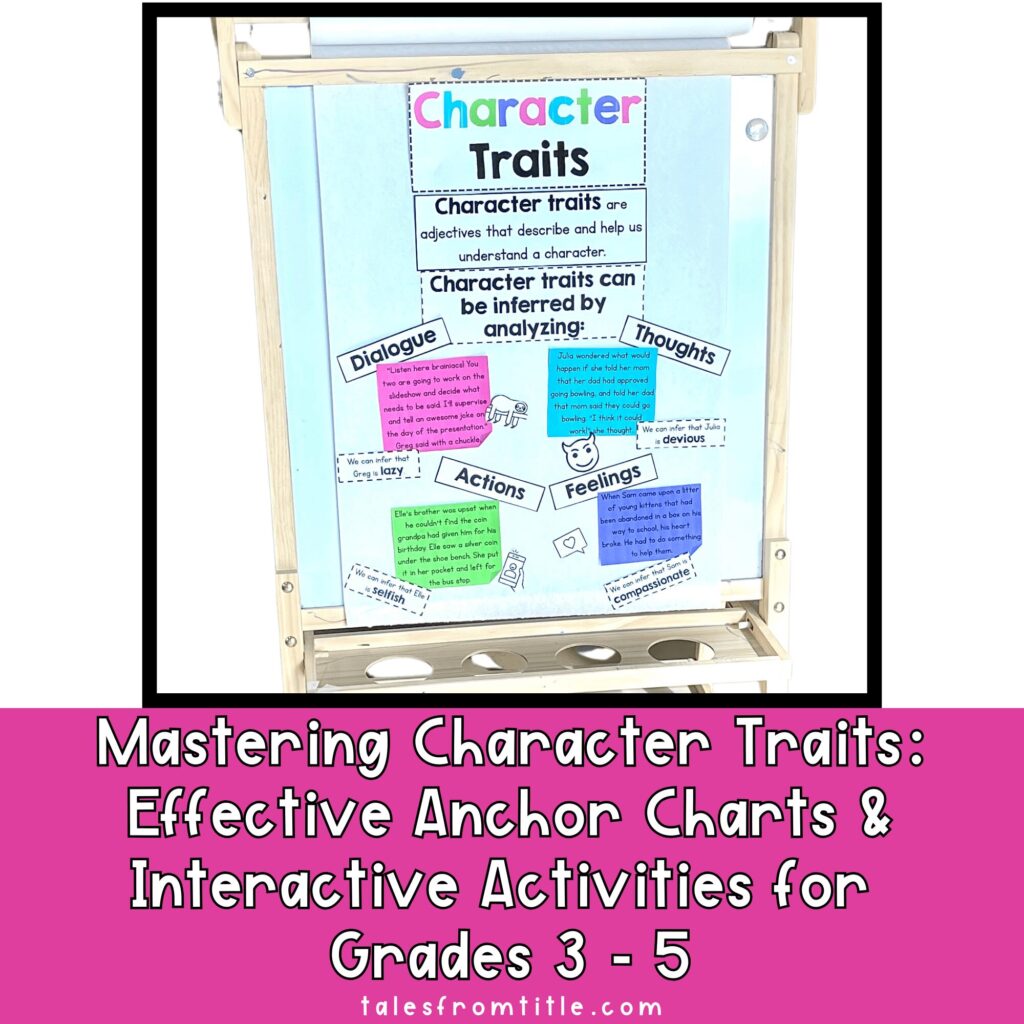
The Benefits of Anchor Charts in the Classroom
Anchor charts serve as a visual reference that supports students’ understanding of key concepts. Research indicates that when students see information displayed in a structured and engaging way, they are more likely to retain and apply what they learn (Fisher & Frey, 2014). By working with students to create an anchor chart, you encourage participation and deepen their comprehension through discussion and immediate feedback. These charts remain a resource students can use throughout the lesson and in the days and weeks ahead, helping them apply character trait analysis independently.
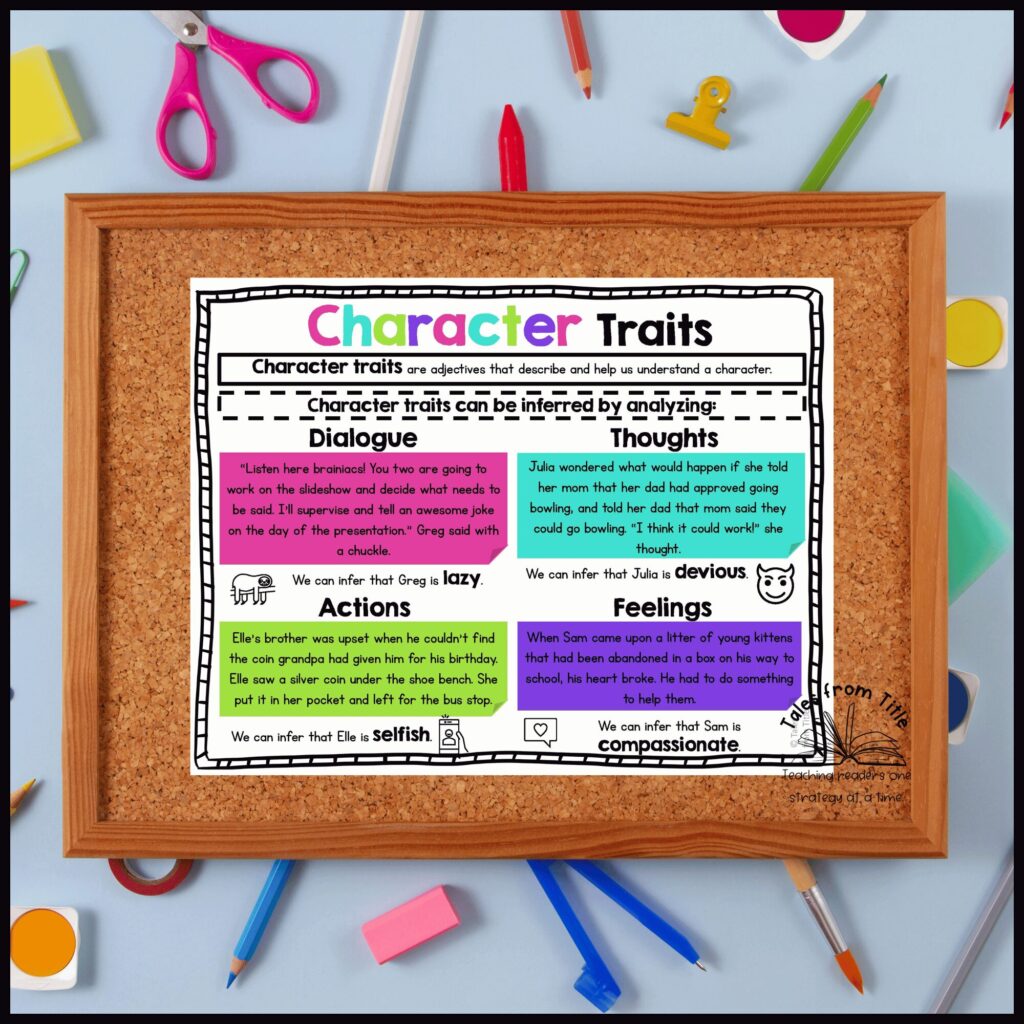
The Benefits of Interactive Notebook Pages
Interactive notebooks provide a hands-on way for students to process information and make personal connections with the content. According to Marzano (2017), students who engage in note-taking and interactive activities show improved comprehension and retention of concepts. By incorporating character trait analysis into their interactive notebooks, students create a personalized learning tool they can reference throughout the year. This interactive approach allows them to be actively engaged in their learning, reinforcing their ability to infer character traits through various textual clues.
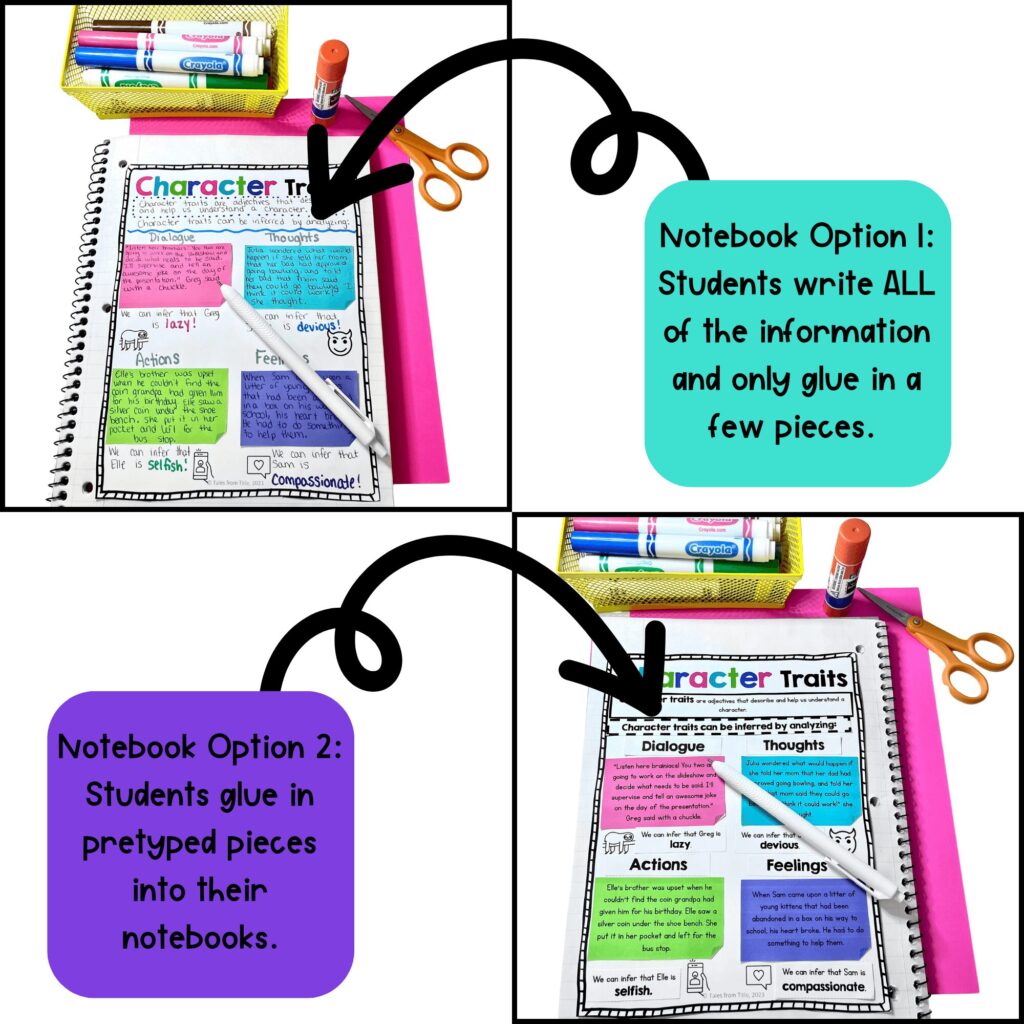
Creating an Anchor Chart or Interactive Notebook Page for Character Traits
To introduce character traits, start by engaging students in a discussion about memorable book characters. Ask students what makes their favorite characters unique and guide them toward using adjectives instead of physical descriptions. On a large anchor chart, write the title “Character Traits” and introduce the idea that character traits are adjectives that describe a character’s personality.
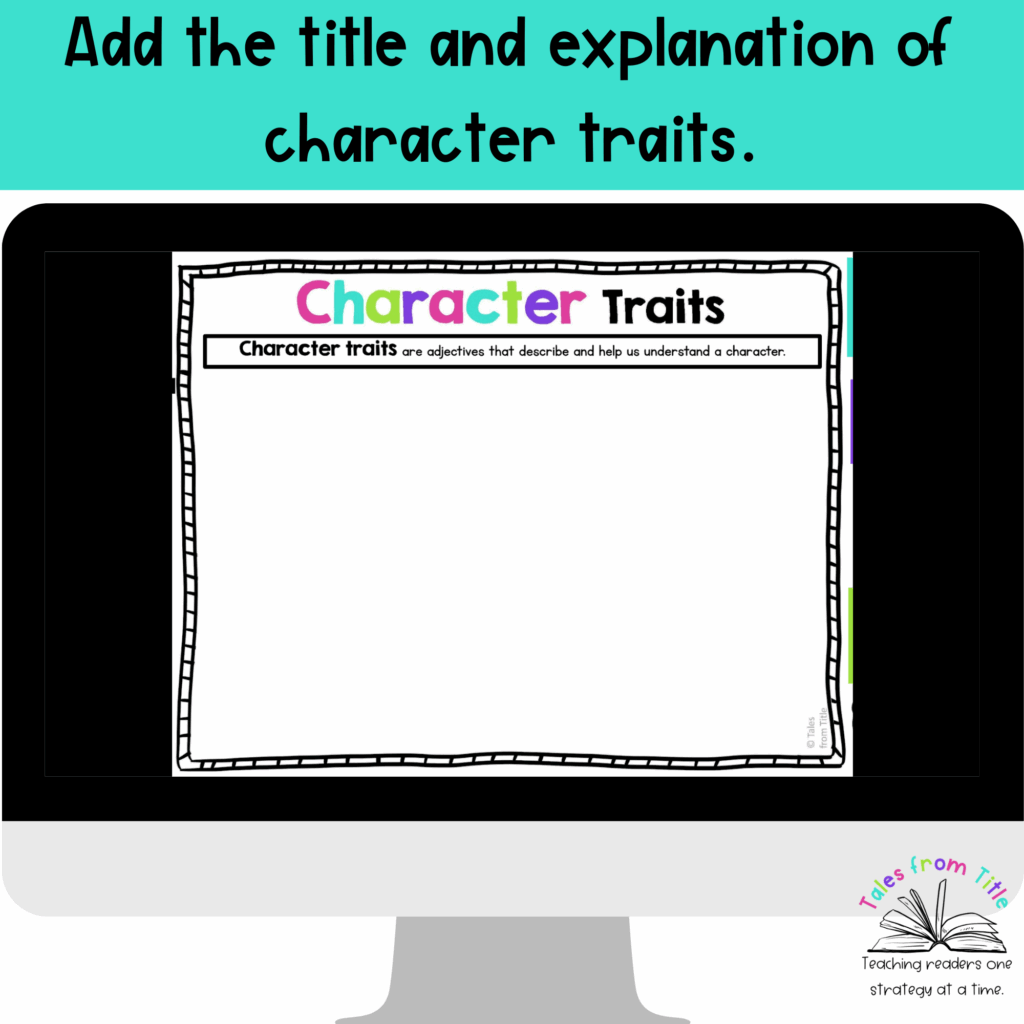
Next, explain that readers infer character traits by analyzing four key elements: thoughts, feelings, actions, and dialogue. Add these categories to the anchor chart. To reinforce this concept, students will analyze four characters and infer their traits based on short reading passages.
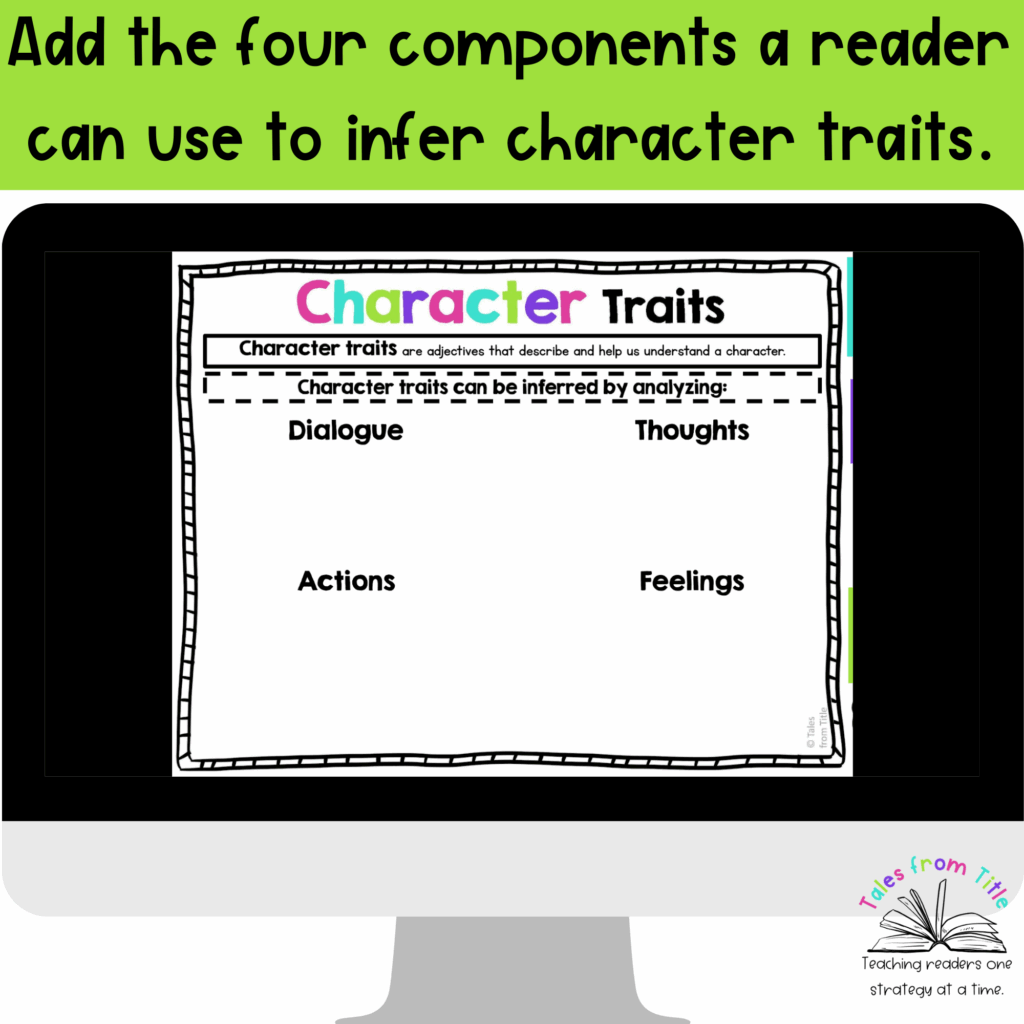
Character 1’s Dialogue: Find and read a passage where a character comes across as lazy and read it aloud to your class. Ask students how they would describe the character based on what he or she says. Then, add the dialogue and character trait to the anchor chart. For example, on my chart it says, “Greg is lazy.” And it includes dialogue from a passage I made up.
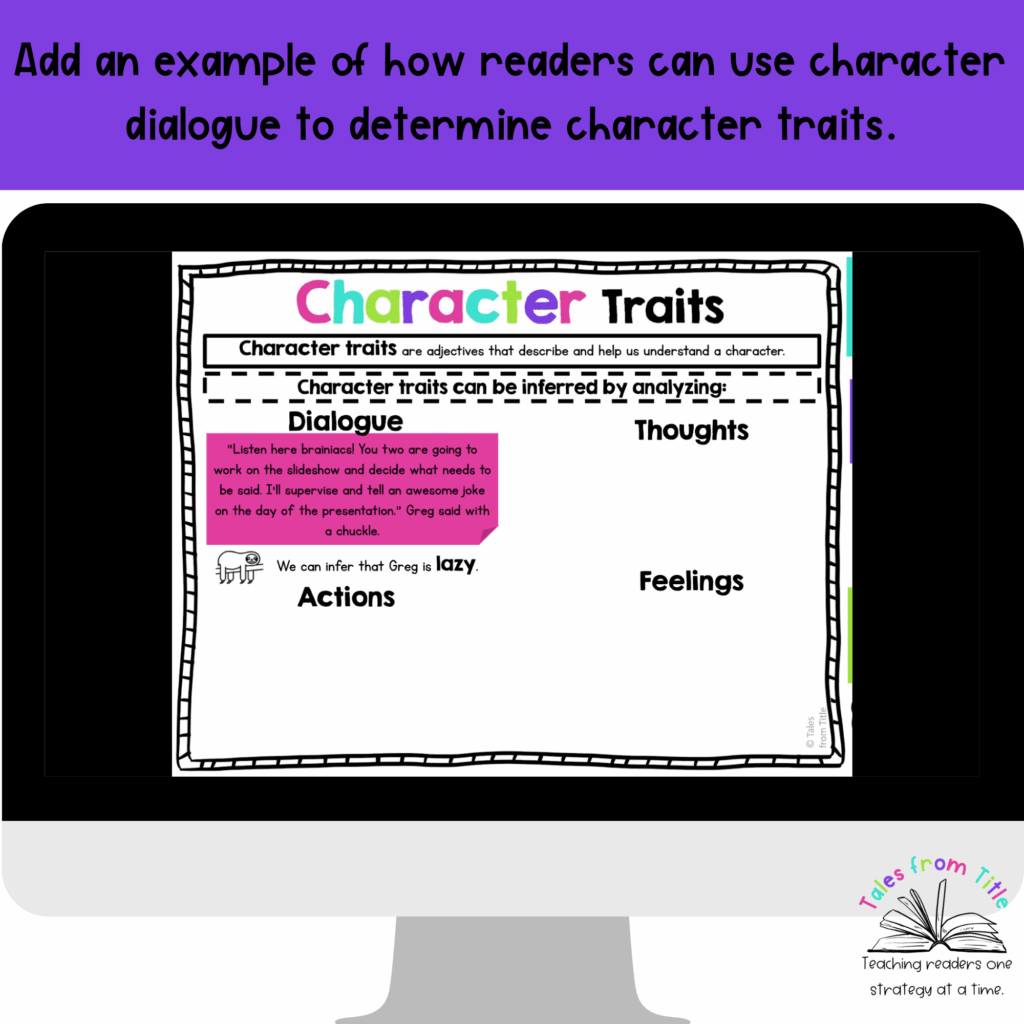
Character 2’s Thoughts: Find a passage where a character manipulates her parents into letting her do something with friends and read it to your class. Ask students to describe the character. Then, add the text with the character’s thoughts to the anchor chart and how your class would describe the character. On my chart, my character, Julia, is described as devious.
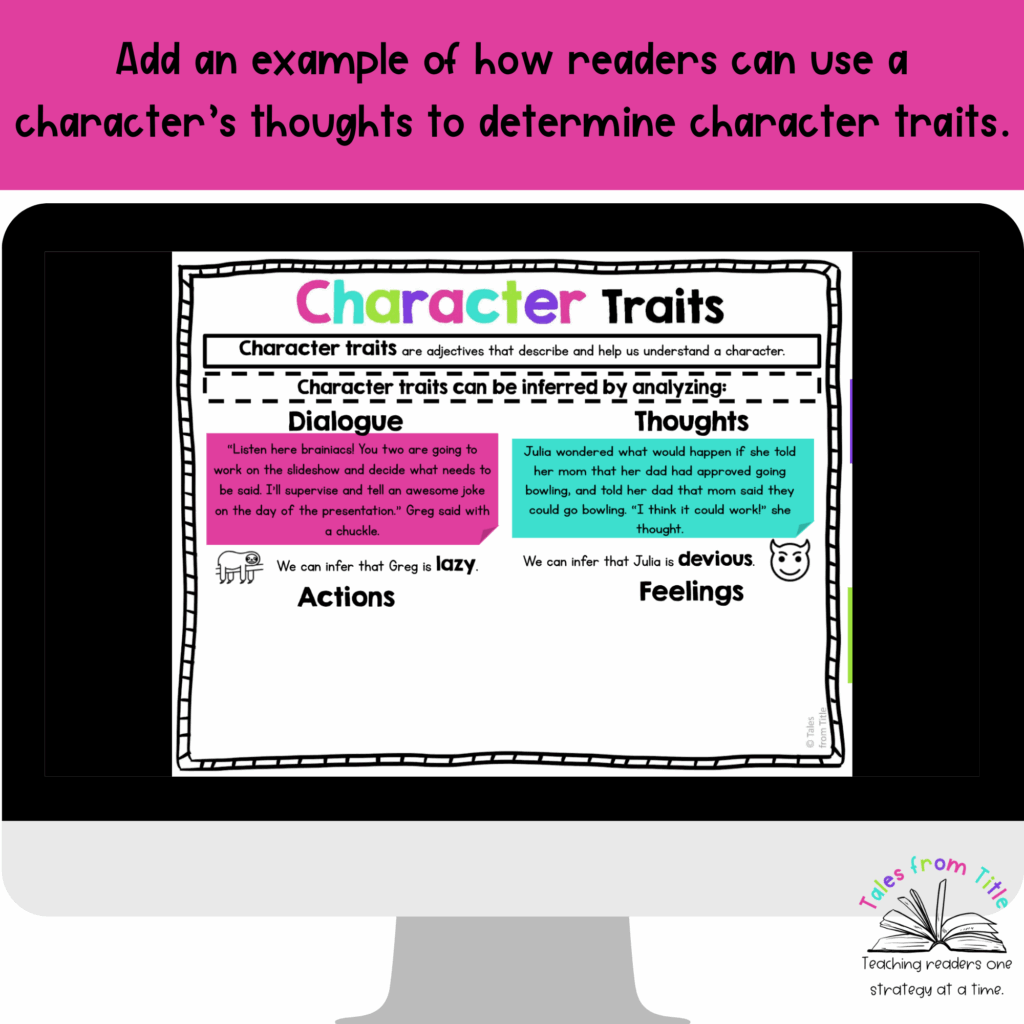
Character 3’s Actions: Find a passage where a character finds a lost item but keeps it instead of returning it. Ask students for an adjective to describe the character. Then, add the text with the character’s actions to the anchor chart and how your class would describe the character. For example, on my chart it says, “Elle is selfish”.
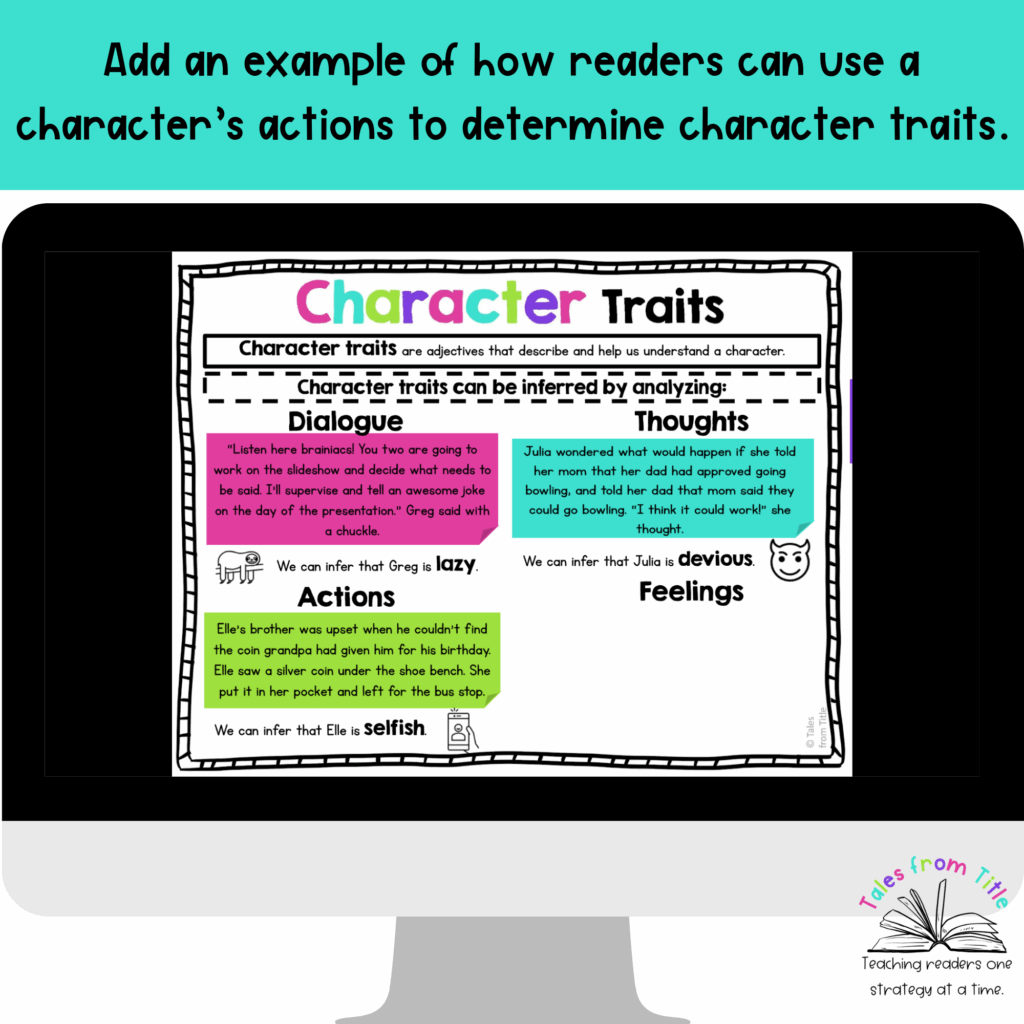
Character 4’s Feelings: Find a passage where a character finds an abandoned animal and feels compelled to help it. Ask students what word describes the character. Then, add the text with the characters feelings and how your class would describe the character to the anchor chart. For example, on my chart my text is about a boy named Sam and he is compassionate.
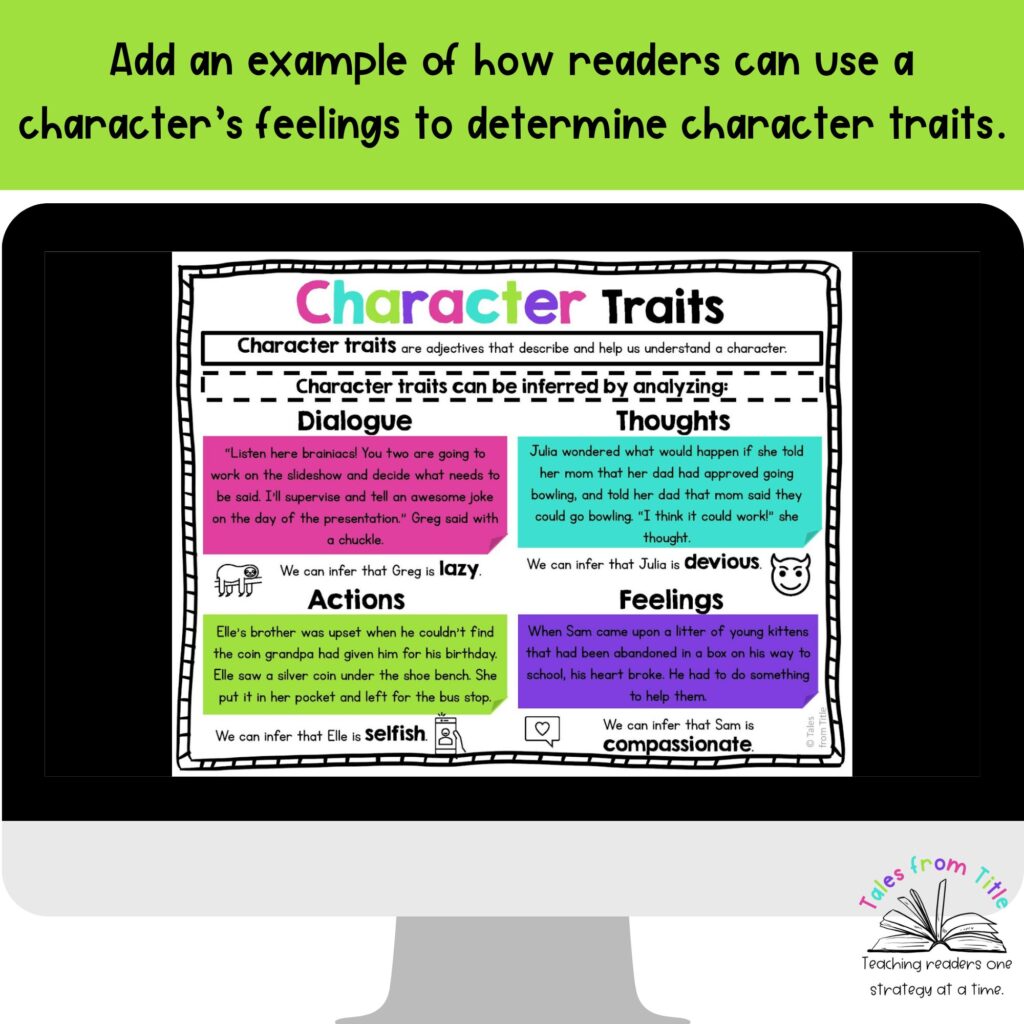
The examples I described above were used to create an anchor chart, however, you could structure your lesson the same way, but instead of making an anchor chart, you have your students create a page in their interactive notebooks.
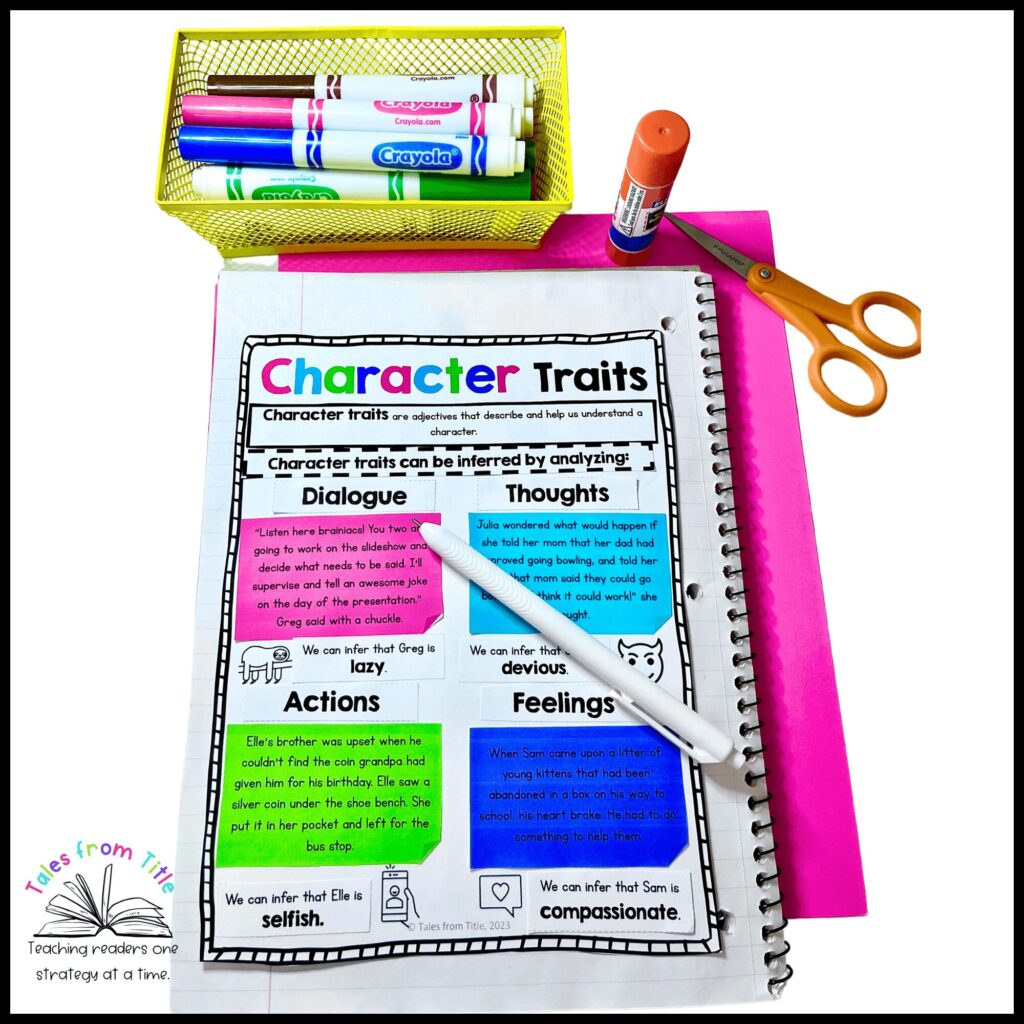
A Ready-Made Solution for Busy Teachers
While making your own anchor charts and interactive notebook activities is a great way to tailor the lesson to your students, some teachers may find the process time-consuming. If you prefer a ready-to-use resource, my Character Traits Anchor Chart & Interactive Student Notebook Resource is available in my Teachers Pay Teachers store. It includes print and digital options, no-prep interactive elements, and lesson plan scripts to help you teach character traits with confidence and ease.
By combining anchor charts and interactive notebooks, students get the benefit of visual reinforcement and hands-on practice, leading to deeper comprehension and engagement. Whether you create your own or use a pre-made resource, these strategies will help your students master character traits in an interactive and meaningful way.
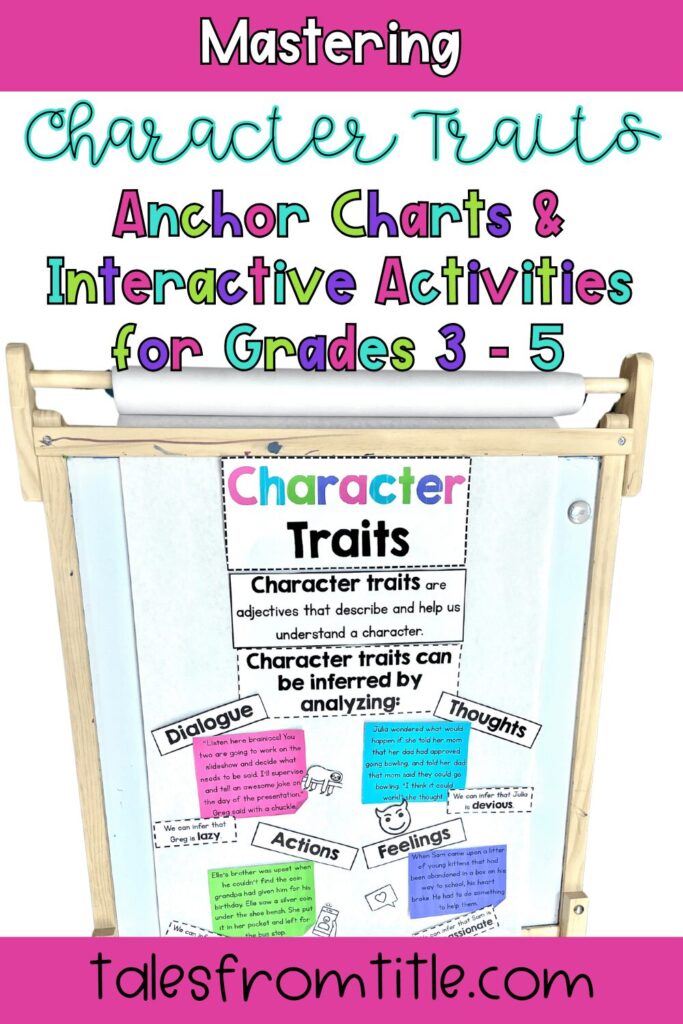
References
Fisher, D., & Frey, N. (2014). Visible Learning for Literacy: Implementing the Practices That Work Best to Accelerate Student Learning.
Marzano, R. J. (2017). The New Art and Science of Teaching: More Than Fifty New Instructional Strategies for Academic Success.
